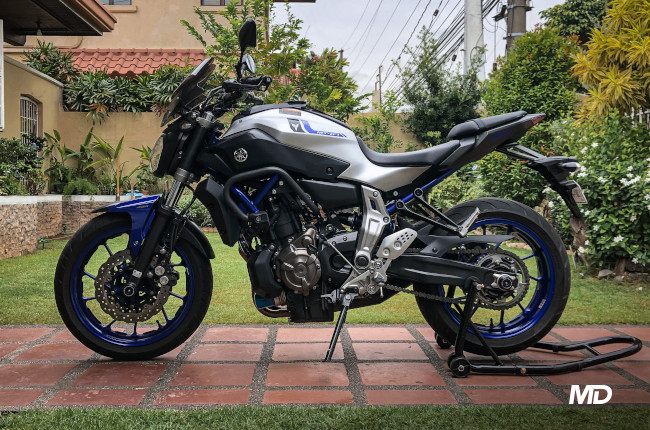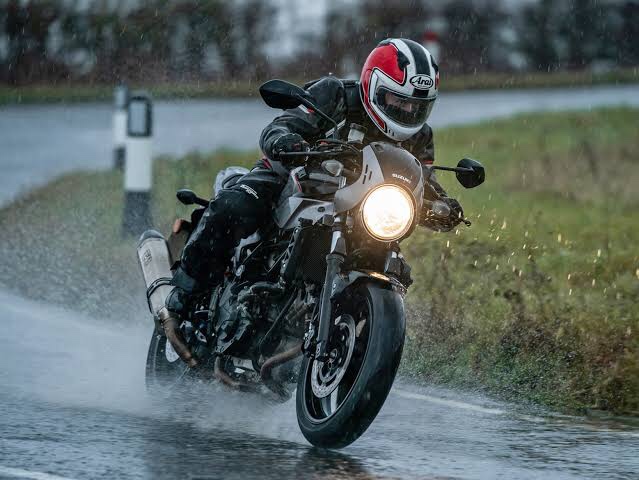Motorcycle engine configurations 101
It's time to nerd out and take a closer look at the popular engine types.

Motorcycles come in all shapes and sizes, and present themselves with different riding experiences. A large portion of the character of a certain motorcycle boils down to the engine configuration, as the vibrations, power delivery, and exhaust note are all dependent on the way the motorcycle’s engine is laid out. Contrary to popular belief, a bike’s exhaust isn’t solely responsible for the exhaust note it produces.
In fact, exhaust note is more dependent on the bike’s engine layout—an aftermarket exhaust only amplifies its already inherent soundtrack. There are several popular engine configurations currently in use by motorcycle manufacturers of today. Let’s take a look at each of them and weigh the pros and cons of each.
The ever-reliable single-cylinder

The first engine type is the most ubiquitous engine on the road: the single-cylinder. As the name suggests, these types of engines only have one cylinder, with one piston solely responsible for making power. The reason why single-cylinder engines are so popular is simply because of their rudimentary architecture, which makes them generally affordable to build, maintain, and repair. Nearly all commuter-spec scooters as well as dirt bikes are equipped with single-cylinder engines, so the likelihood of coming across one on the street is an absolute certainty. Some popular motorcycles equipped with single-cylinder motors include the Husqvarna Svartpilen 401 and the Vespa S 125.
The tractable parallel-twin

Moving on, the parallel-twin, or sometimes referred to as the inline two-cylinder makes use of two pistons moving up and down to produce power. Parallel-twin engines come in a myriad of configurations depending on their firing orders. Kawasaki’s 650 model range as well as Honda’s 500cc bikes make use of a 180-degree crankshaft in which the pistons move up and down opposite of each other. Meanwhile, Yamaha with its crossplane crankshaft, and Triumph make use of a 270-degree crankshaft which sees the pistons offset at a 270-degree angle, hence the burlier sound, and smoother power delivery.
The legendary V-twin

A staple in the cruiser world, the V-twin has been around for more than a century now, and was made popular by none other than Harley-Davidson. To this day, all of Harley-Davidson’s motorcycles, save for the LiveWire, make use of a V-twin motor. In this set up, the front and rear cylinder form a v-pattern. A V-twin motor can be mounted longitudinally as in standard cruiser, or transversely as is the case in bikes like the Moto Guzzi V85 TT.
The sophisticated boxer-twin

Boxer twins are very special engines in a sense that only BMW continues to use them consistently. Also referred to as horizontally opposed engines, boxer twins are flat engines with both pistons situated opposite of each other, hence the name “Boxer”. A major benefit of the boxer engine is that it keeps the center of gravity very low—giving the bike a stable, confidence inspiring characteristic, and making it feel light and nimble on its feet.
The distinct inline three-cylinder

Inline-three-cylinder engines, or simply referred to as triples, make use of three pistons situated in a row. These compact engines are oftentimes used sporty machines such as the Yamaha MT-09, Triumph Street Triple RS, and MV Agusta F3. Known for their distinctive exhaust note, inline-triples are a happy medium between the bottom to mid-range of a parallel twin, and the peaky top-end power of an inline-four, thereby offering a very tractable powerband for street and track use.
The sporty inline-four

The inline-four is by far the most popular engine in use by sportbikes—particularly from Japan. The big four—Yamaha, Honda, Kawasaki, and Suzuki, all make use of the inline-four cylinder engine in their liter-class superbikes. Yamaha’s inline-four engine, however, is equipped with a crossplane crankshaft, meaning the pistons are 90-degrees separated from each other. This means that no two pistons are at the same part of the stroke throughout a revolution. This gives the CP4 a very distinct sound, and a buttery smooth power delivery. Other than that, its engine configuration is identical to that of the conventional inline-four with all four cylinders lined up in a row.
The roaring V4

The last engine on our list is the V4. Think of it as two parallel-twin engines laid out in a V-twin configuration. Just like the V-twin, the V4 has two banks of cylinders—one at the front, and one at the back. V4 engines are known for producing loads of power all across the rev range, hence are used by nearly all manufacturers in the MotoGP, save for Yamaha and Suzuki, who have stuck to the inline-four configuration. Popular bikes that make use of a V4 engine are the Ducati Panigale V4 S, Aprilia RSV4, and Ducati Multistrada V4.
Related Articles
-
Big bike versus small bike: which one is better for your lifestyle? / Featured Article
Here are a few tips to decide if you should get a big bike or small bike depending on your lifestyle.
-
Axial versus radial calipers - brake technology explained / Featured Article
Today, let’s talk about the differences between radially and axially mounted calipers, and determine the situations which are ideal for either.
-
Is your motorcycle out of warranty? Be sure to check these items ASAP / Featured Article
If your motorcycle is out of warranty, it’s now your duty to make sure you stay on top of its maintenance no matter what, or run the risk of facing a hefty repair bill.
-
Three reasons why you need a dual-sport motorcycle in your garage / Featured Article
Here are a few reasons why you need a dual-sport motorcycle in your garage, and a few reasons why they’re the most versatile machines on two wheels.
-
Think twice before installing these 3 motorcycle modifications / Featured Article
When it comes to upgrading your motorcycle, you may want to think twice before installing these 3 mods.
Latest Features
-
Big bike versus small bike: which one is better for your lifestyle? / Featured Article
Here are a few tips to decide if you should get a big bike or small bike depending on your lifestyle.
-
Axial versus radial calipers - brake technology explained / Featured Article
Today, let’s talk about the differences between radially and axially mounted calipers, and determine the situations which are ideal for either.
-
3 things that make the Honda ADV 160 the perfect small-displacement all-rounder / Featured Article
Here are three reasons why the new Honda ADV 160 is one of the best small-displacement scooters in the market today.







